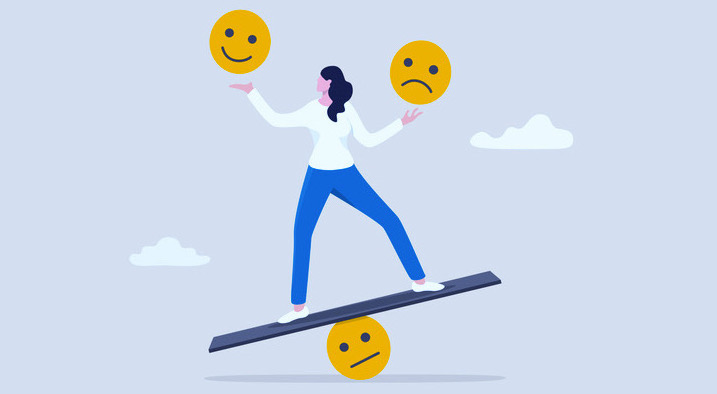
In a previous post, we looked at taking care of your own wellbeing and mental health, and ways to deal with stress and build physical and mental resilience so you can function at your best. In this follow-up piece, we look at ways business leaders and managers can extend that out into the wider workplace, so you can support your employees’ wellbeing and build an open and supportive company culture.
There are many benefits to building employee resilience, from your team members being more engaged and productive to fewer problems with staff absenteeism, burnout, and turnover. Not to mention meeting the legal responsibility employers have to manage risks to employees’ mental and physical health, just like they do any other health & safety risk.
Resilience hinges on giving people opportunities to build the knowledge, skills, and capabilities to really thrive at work and be able to respond effectively to stress, challenges, and change.
As a caveat, we are HR experts not psychologists or counsellors. If you or anyone you know or work with are experiencing mental distress or ill health, please seek the help of trained professionals.
Mental health in the workplace
There are plenty of statistics that highlight the mental health challenges Australian workers face. Support service, Beyond Blue, reports that 1 in 5 Australians have taken time off work in the past 12 months because they felt stressed, anxious, depressed or mentally unhealthy, and almost 50 percent of employees have left a workplace due to a poor mental health environment.
91 percent of employees believe mental health in the workplace is important but only 52 percent believe their workplace is mentally healthy. 8 out of 10 organisations provide mental health support for their people, but more than a third (35 percent) of employees don’t know they exist or have access to them.
The demands on employees and their mental (and physical) wellbeing has been further affected by the COVID-19 pandemic. A recent US Workplace Resilience Survey by workplace mental health specialists, Unmind, found the mental health and wellbeing of 38 percent of workers had been negatively impacted by the pandemic and employers believed employees’ work-life balance had gotten worse, with working hours increasing and fewer opportunities for career advancement.
The benefits of a mentally healthy workplace
Providing a safe and positive workplace is a win-win situation for employers and employees. Beyond Blue estimates that for every $1 businesses invest in effective workplace mental health strategies, they receive an average return of $2.30.
Some of the key benefits are:
- Increase in productivity (mental health is the primary cause of productivity loss in most Westernised countries).
- Increase in employee engagement and job satisfaction.
- Decrease in work-related injuries and illnesses.
- Decrease in burnout, absenteeism, and presenteeism (being at work but preoccupied or distracted).
- Decrease in turnover and recruitment costs.
- Increase in attraction of top talent.
- Lower societal costs.
All these things also mean you will spend less time managing disruption and issues, and can focus on building the business.
The challenge for employers: creating a real culture of openness and support
As the Beyond Blue statistics illustrate, there is often a disparity between what employers believe they are offering, in terms of mental health awareness and support, and what employees experience in the workplace.
So the challenge for business leaders and managers is proving that wellbeing is a priority for the organisation and creating an environment that truly supports mental health and builds resilience. Research proves that it is an investment in your people and your business, overall.
There are many parts that help cement wellbeing in the day-to-day workplace culture. Leaders need to lead, so take a proactive approach in looking after your own mental (and physical) health and promoting open health and wellbeing conversations with your team.
Increasing awareness of mental wellbeing and encouraging all staff to look out for each other is vital. There can be a real stigma around mental health challenges, and an open and supportive working culture will help reduce discrimination and fear (a 2016 survey by the New Zealand Health Promotion Agency found the workplace was one of the most common settings for discrimination against people who suffered from mental health problems and people were very unlikely to want to disclose mental illness to their employer or colleagues).
In a wider context, your team members shouldn’t be unafraid of making decisions and mistakes or admitting when they are finding things tough. This helps build their trust and confidence as well as their resilience.
Invest in training your people (and yourself) about mental health awareness, stress management strategies, recovery, and self-care - both physical and mental. Provide Employee Assistance Programme (EAP) so employees have a safe space to discuss concerns with trained specialists and make sure your people are aware of the services.
And don’t ignore the connection between mental and physical health; exercise and mindfulness programmes that your team can participate in, e.g. step challenges or lunchtime yoga, can be a great benefit.
Key ingredients of an open and supportive culture
- Awareness.
- Training.
- Organisational support.
Learn more about creating healthy workplaces at Headsup.org.au.
Supporting smart work and work-life balance
Unmind’s 2021 Workplace Resilience Survey found that 90 percent of US employers surveyed believe their employees are experiencing burnout and 45 percent of employees surveyed had experienced symptoms of burnout.
In some respects, increased workplace flexibility and working from home (especially in response to the COVID-19 pandemic) has actually reduced employee wellbeing, e.g. isolation and not interacting with colleagues as much, working longer hours or always being ‘on call’, juggling family and work responsibilities.
So, in response, savvy employers are applying principles of smart work design (e.g. involving staff in decisions on when, where, and how work is performed, closely monitoring workloads and breaks, ensuring the work environment is safe and encouraging) and supporting better work-life balance.
Top 5 interventions for supporting better work-life balance
- Offering increased paid time-off.
- Offering increased support for parents.
- Focusing on productivity, rather than working hours.
- Asking employees how they would like to improve work-life balance.
- Providing leadership training around promoting work-life balance among colleagues.
Remember, any intervention will be most effective when it is truly supported and championed by the leadership team.
Find out more about building a strong company culture.




